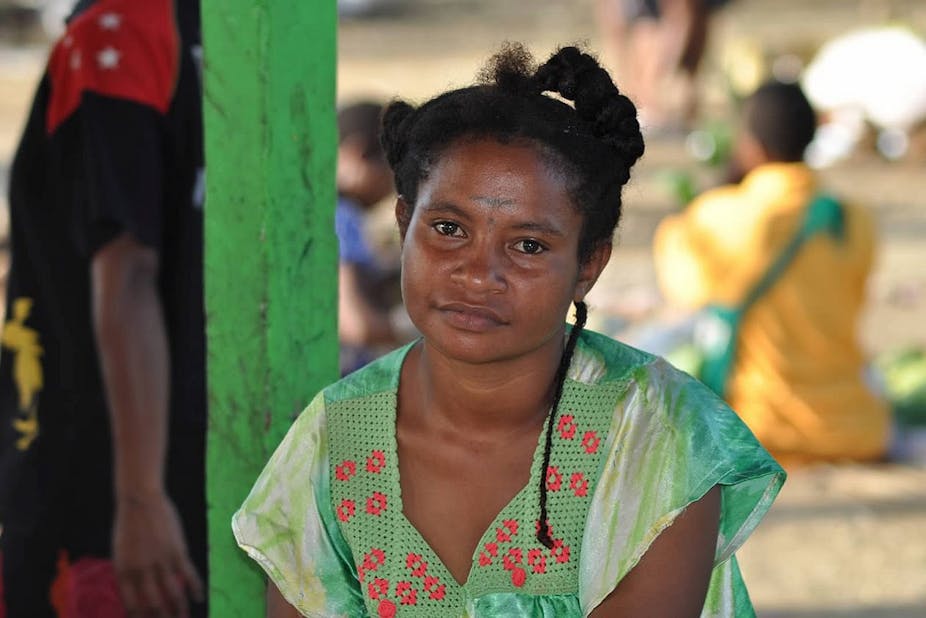Contemplating how Papua New Guinea (PNG) would deal with Ebola may not be that different from asking the same of Liberia 12 months ago. While PNG’s per capita gross national income (US$2,540 in 2013) is much higher than Liberia (US$880), there are similarities between their health systems. Each country, for example, has around six doctors for every 100,000 residents.
The Ebola epidemic in West Africa remains out of control, with the cumulative case count doubling every 20 days. As of October 27, the World Health Organization (WHO) reported a total of 13,703 suspected cases and 4,920 deaths. The WHO predicts that there could be as many as 10,000 new Ebola cases per week by December 2014.
As the number of cases increases rapidly, the likelihood of exportation to other countries rises and PNG is not immune, having an international airport with direct flights from at least eight foreign cities. PNG is, of course, Australia’s closest neighbour and the Commonwealth government says it is preparing to respond to any regional outbreak.
The PNG government has established a National Response Technical Taskforce on Ebola. Construction of a quarantine facility at the country’s international airport is underway and a traveller declaration form will be issued at airports where flights to PNG originate. However, the country’s capacity to treat infected patients and prevent further spread is very limited.
PNG’s gross national income has grown more than threefold since 2005 as a result of the resources boom. However, the health system has not kept pace with economic growth. Expenditure on health was just US$114 per capita in 2012, comparable with Sudan. Life expectancy is shorter and infant mortality is higher than most neighbouring Pacific countries.
Many government-run health clinics have closed in recent years due to lack of trained personnel. Availability of basic essential medical supplies in health centres rarely surpassed 60% of requirements between 1999 and 2010. A recent study published in DevPolicy Blog found an 18% decline in patients utilising a health clinic between 2002 and 2012, despite a 30% increase in the population during that period.

The poor capacity of the health system in PNG to control infectious diseases is illustrated by the continuing high transmission of tuberculosis (TB) and the emergence of highly resistant TB strains. The national rate of new cases of TB is unknown; however, based on data from Western and Gulf Provinces, it may be higher than 700 per 100,000 population, which is among the highest in the world.
There has been a rapid increase in drug-resistant TB circulating in communities; for example, in Western Province in 2013, 20% of new TB cases were drug-resistant. An external review of the national TB program early in 2014 found that infection control and isolation facilities were sub-standard in most health facilities.
Another worrying sign of lack of preparedness is the cholera outbreak that began in July 2009 and was still not under control by mid-2011 by which time there had been 15,500 cases and more than 500 deaths. It is unlikely that PNG health facilities could cope with any number of patients with Ebola, which is much more challenging to treat (and prevent) than cholera.
So, how could Australia help reduce the impact of Ebola if the virus were to arrive in PNG?
Assistance in developing a preparedness plan is the most urgent priority. This plan needs to map out the details of diagnosis, treatment, infection control, contact tracing, surveillance, and public education and identify the resources to implement the plan. In the event of Ebola cases occurring in the country, direct Australian assistance in the form of medical teams, equipment and logistical support may be needed.
It is difficult to know how the Australian government is planning to respond to Ebola outbreaks in the region because there is very little public information available. The aid section of the DFAT website, for example, makes no reference to Ebola.
The Department of Health website has information for consumers and health professionals on preparedness in Australia but does not refer to Australia’s potential role in the Asia-Pacific region. Nor is there any reference to Ebola on the website of the National Critical Care and Trauma Response Centre in Darwin, which hosts Australian Medical Assistance Teams (AUSMAT).

On 22 October, the Chief Medical Officer Professor Chris Baggoley told a Senate Estimates Hearing that it would take up to two weeks to train AUSMAT teams before they would be ready to assist in the response to Ebola outbreaks in the region. However, the health minister Peter Dutton responded by saying:
A team of 20 is ready to be dispatched to anywhere in the region, possibly Papua New Guinea, if an outbreak occurs nearby.
Based on the recent performance of the health system in PNG, the country is ill-prepared to deal with an outbreak of Ebola. If this should happen, the logical source of external assistance would be Australia. But there is no coherent evidence that Australia is capable of doing so.

